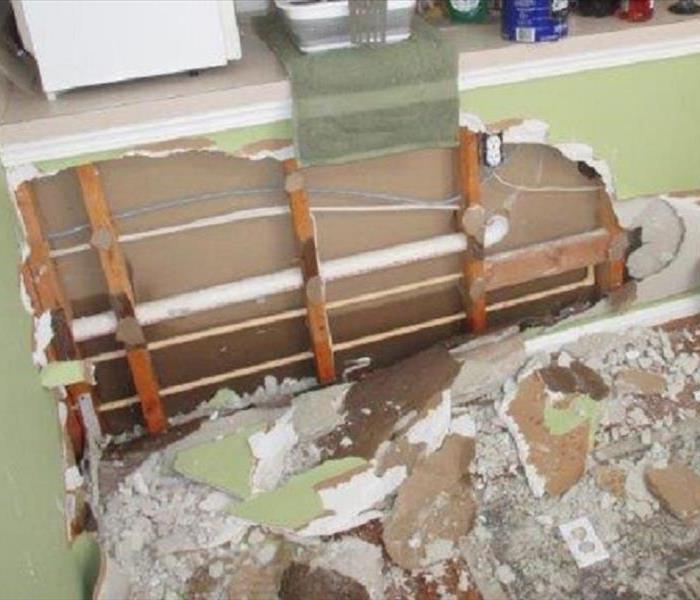Frozen Pipe Bursts Part 1: Preventing Frozen Pipes during Winter Months
12/15/2015 (Permalink)
Frozen pipes can mean big problems for your home. As water freezes, it expands and can exert up to 2,000 pounds of pressure per square inch! That pressure can cause pipes to burst and water to flow into your home, potentially causing extensive damage.
Taking preventative measures during the cold winter months is the best course of action to avoid frozen pipe bursts. The pipes that are most susceptible to freezing are those that are outdoors, are exposed to exterior walls, or are in unheated areas like under cabinets or in attics or crawl spaces. In order to prevent frozen pipes in those areas, follow these tips:
- Drain water from hoses, water sprinklers, and other outdoor lines when the weather starts to cool down and they will no longer be in use.
- On particularly cold days, open cabinet doors to allow warm air to flow around pipes and turn on the taps slightly to allow a slow drip to run through the faucets.
- Make sure that there is insulation present in areas around pipes that are more susceptible to cold weather.
- Consider installing heating cable, heating tape, newspaper, or another form of insulation around exposed pipes.
- If you are leaving for vacation, don’t set the temperature any lower than 55°F.
Putting these tips into practice will significantly reduce your chances of having a pipe freeze in your home, and thereby, avoid the larger and much more costly and inconvenient problem of a pipe burst.
Sources:
http://homerepair.about.com/od/plumbingrepair/ss/thaw_frzn_pipe.htm#step1
http://www.redcross.org/prepare/disaster/winter-storm/preventing-thawing-frozen-pipes






 24/7 Emergency Service
24/7 Emergency Service
